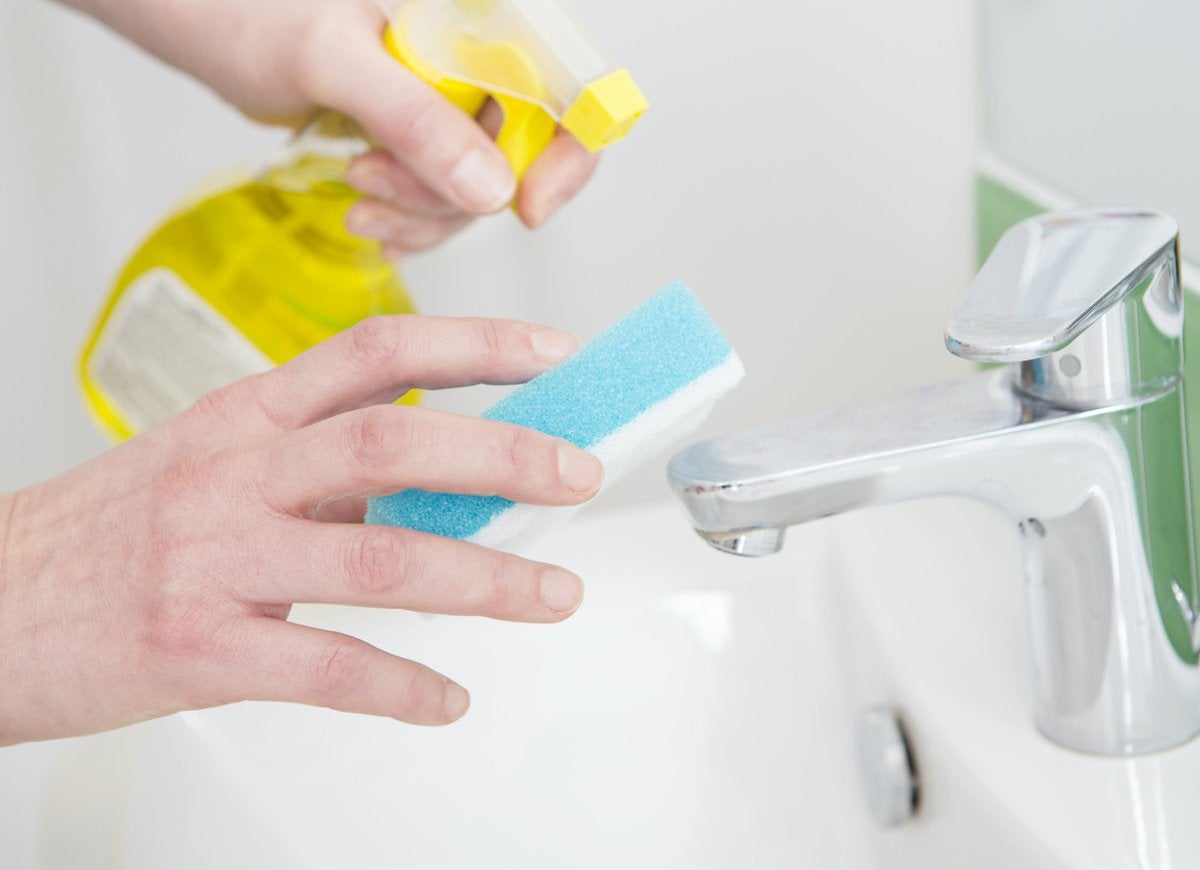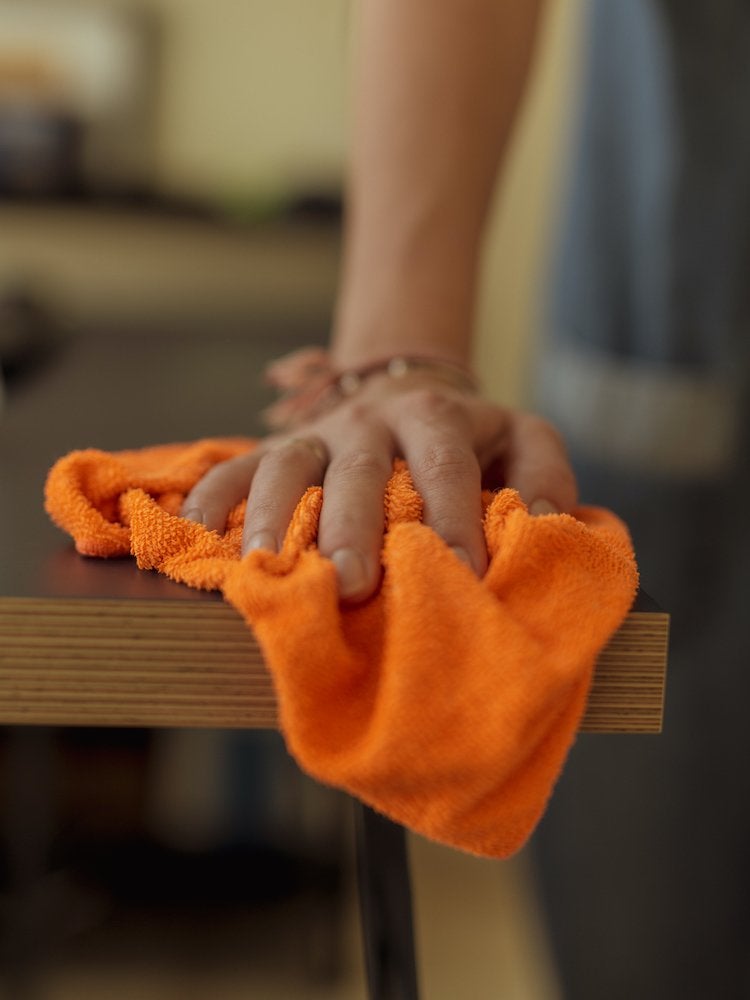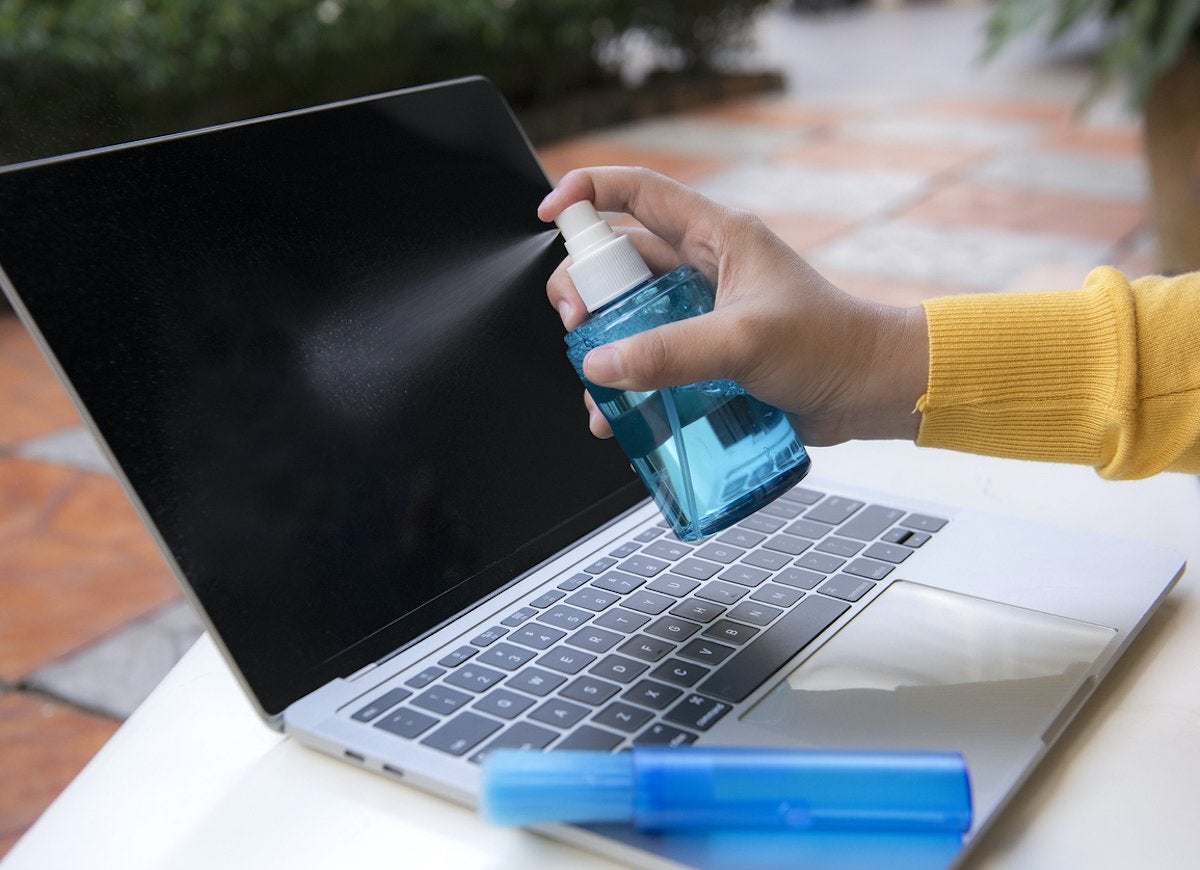We may earn revenue from the products available on this page and participate in affiliate programs. Learn More ›
Clean up your cleaning habits

Routines we use to clean the home become second nature. We may never stop to think if we’re doing it right or if we could be doing it better. Believe it or not, there are actually some right and wrong ways to dust, mop, scrub, vacuum, and clean essentially everything in the home. Worried now that you’ve been incorrect this whole time? Click through to see the most common mistakes and how to fix them.
Using Furniture Polish to Dust

Furniture polish, while it smells great and makes your cabinets look shiny, should be used sparingly. Most commercial furniture polish has a large percentage of oil in it, which can smear and make fingerprints more prominent. In general, a cloth, barely damp with water, will suffice for general maintenance cleaning.
Scrubbing Stains out of Carpet and Upholstery

Stains happen. Everywhere. Even in your carpets. When it does, resist the urge to scrub the stain out; that will damage the pile. Instead, blot as much of the spill up as you can with a clean, dry towel. Then, rinse it thoroughly with clean water, and blot dry again. Repeat as needed, and apply carpet stain remover if necessary, following the manufacturer’s directions.
Washing Windows on a Sunny Day

It seems obvious you should clean your windows when the sun is shining so you can see what you’re doing. But, actually, the opposite is true. Hot sun will make glass cleaner evaporate quickly and cause streaking. Instead, wait for a cloudy day, when temps are under 70 degrees.
Using Spray Cleaners on Electronics

Never use sprays like window cleaners on electronics like your TV, cell phones, or LCD screens. They can do damage, as can the wood fibers from paper towels and tissues. Use a microfiber cloth instead or in the absence of that a coffee filter. If you need the extra umpf of a cleaner, use rubbing alcohol. And always spray onto your cloth, not onto the screen.
Related: 12 Surprising Things You Should Never Clean with Water
Mixing Ammonia and Bleach

You should never mix cleaning products. Period. But you should especially never work with an ammonia-based and a bleach-based cleaner at the same time. This is most likely to occur in a bathroom or kitchen, so carefully check labels before getting to work. When vapors from ammonia and bleach mix together, they form a toxic gas that is extremely dangerous. If you discover that you, or someone in your home, has been exposed to these fumes, leave the area immediately and call 911.
Using Abrasives on the Tub & Tile

Using abrasive cleaners or tools on porcelain tile and bath tubs is a very common mistake. Abrasives will remove stubborn dirt, but will also dull the finish. So resist using that pot scrubbing sponge on your tub, and opt for a soft cloth and a non-abrasive liquid cleanser or a non-abrasive powder like Bon Ami. Your tub and tile will thank you.
Mopping a Wood Floor with Water

Water is the enemy of any wood floor. While it’s tempting to get the mop and bucket out to clean hardwood and laminate floors, just like linoleum or tile, it’s harmful and not simply necessary. Sweep and vacuum often with the proper attachments, and mop with a barely-damp cloth when necessary.
Vacuuming in the Wrong Direction

Is there really a wrong way to vacuum? Well, there’s a better way to vacuum. Don’t vacuum perpendicular to the baseboard or you will push dirt under it that will likely get stuck there forever. Instead, vacuum parallel to the baseboard at the edges of the room. Then, make sure to vary your direction in the middle of the room to and lift, separate, and untangle fibers.
Related: 7 Ways You’re Vacuuming Wrong
Not Letting the Toilet Brush Dry Out

Many toilet brushes come in a stand that’s easily tucked behind the commode. Resist placing the toilet brush right back into the stand after swishing the bowl. Doing so will allow all sorts of bacteria to breed in it. Instead, allow it to rest across the seat so it can dry out first, then store it in its caddy.
Related: 8 Ways to Mildew-Proof Your Bathroom
Using Paper Towels to Clean Mirrors

Don’t use paper towels to clean your mirrors. Paper towels are extremely absorbent, which makes them ideal for cleaning up wet messes on counters. But those super absorbent fibers will leave behind a streaky mess if you use paper towels to clean your mirrors. Instead, use a microfiber cleaning cloth to wipe away glass cleaner when you’re doing this chore.
Related: 21 Timesaving Tricks That May Change the Way You Clean
Using Vinegar as a Disinfectant

The use of vinegar for cleaning in the home is an old tradition, and an excellent alternative to conventional cleaning products for many. It cuts grease and is effective on some bacterias. It is not, however, a worthy substitute for a disinfectant. So, if you need to eradicate flu and virus germs, vinegar should not be your cleaner of choice.
Related: 10 Handy Household Uses for Vinegar
Not Cleaning Your Vacuum

Remember to regularly empty and clean your vacuum. A full vacuum will not provide enough suction to be effective in cleaning your carpets. You will just push dirt further into your carpets and rugs. After emptying it, make sure the hoses are clear of obstruction and the brushes are free of hair and other entanglements.
Cleaning the Floors First

The order in which you clean is as important as what you clean with. Make sure when you clean a room that you work from the top down. Don’t mop or vacuum a floor before you’ve dusted furniture or cleaned countertops. You will only move crumbs and dust to the floor that will negate the floor cleaning job you’ve already done.
Related: 8 Cleaning Products That Won’t Have You Lifting a Finger
Using the Same Sponge

Sponges are a breeding place for bacteria and germs. Do not make the mistake of using the kitchen sink sponge to clean the stove and countertops. You will only transfer all that yuck to the surfaces where you prepare food. Make sure if you use a sponge to wipe down surfaces, it is fresh and clean.
Related: 12 Household Cleaning Mistakes That Are Making You Sick
Using a Feather Duster

No matter how cute they look, a feather duster is the worst tool for any dusting job. It will only succeed in spreading dust from one surface to another. Instead, use a very lightly damp cotton rag, or a microfiber cloth that will actually grab and hold dust particles.
Related: The Best Dusters to Clean Every Corner of Your Home
Cautious Cleaning

Lazy cleaning not only makes your home messy, it damages your furniture and belongings. This doesn’t mean you need to spend extra time doing chores, there are still plenty of good hacks for quick and thorough cleaning. Just be sure to read the labels of your cleaning supplies to make sure they work with the material and surfaces you’re scrubbing and keep an eye out for any changes after you clean.

Save Energy While Staying Cozy
Today’s energy-efficient space heaters warm individual rooms, so users needn’t heat unoccupied areas of the house. We tested the most popular space heaters on the market to find out which ones performed the best.
